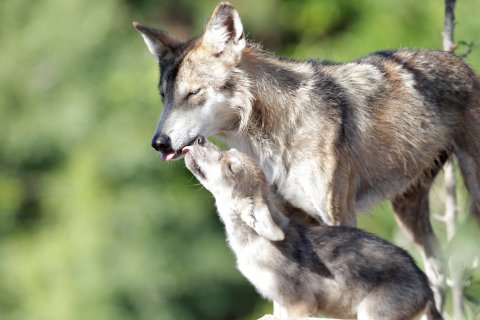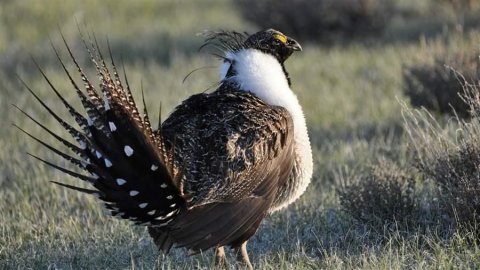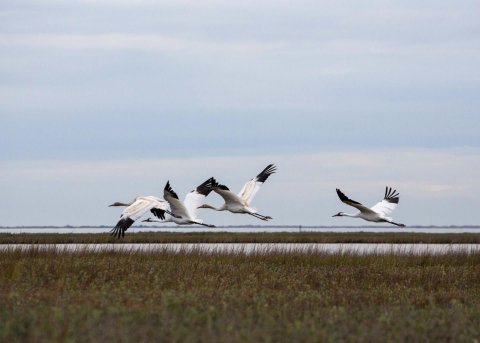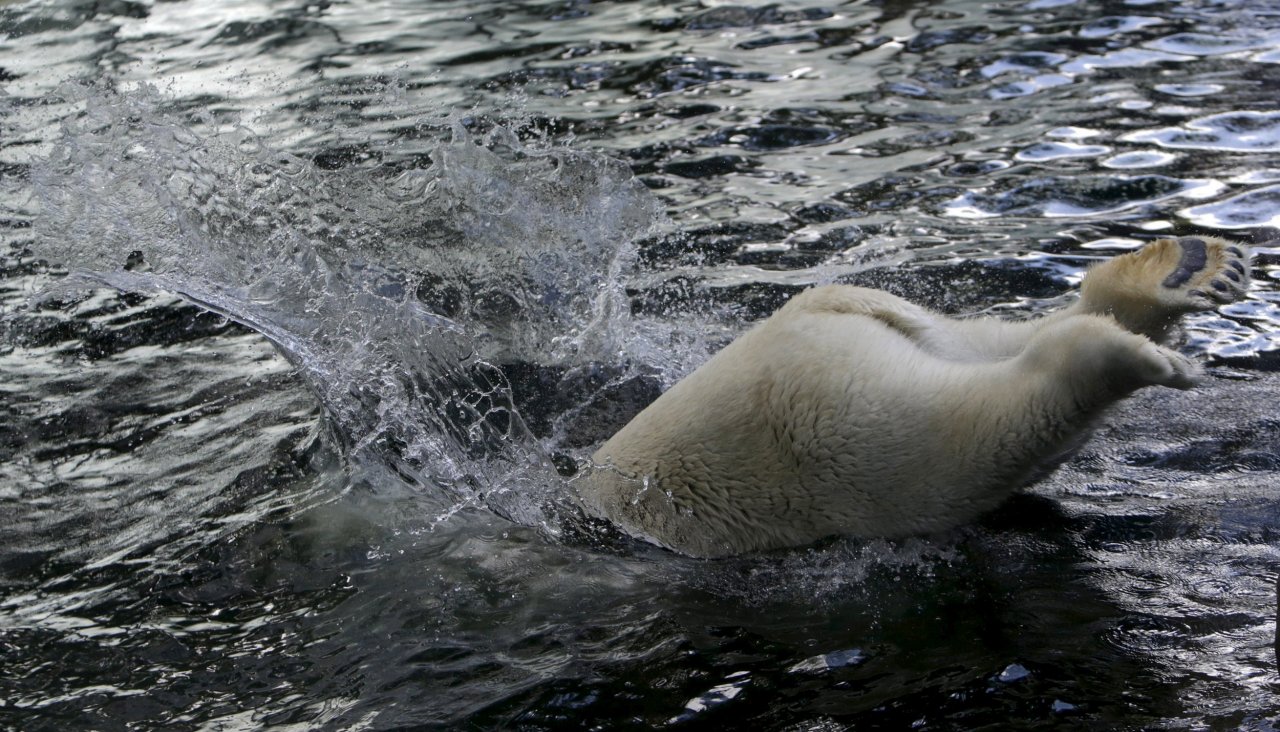President-elect Donald Trump continues to alarm the environmental community. His nominations of people who doubt the scientific consensus on climate change, such as Oklahoma Attorney General Scott Pruitt as potential head of the Environmental Protection Agency, have led researchers and conservationists to fear that recent historic progress on combating climate change may be undone. An equally important issue that's received little attention: Trump and his cabinet may threaten the survival of many endangered species, a pressing issue now as humans are driving a mass extinction of Earth's flora and fauna.
Of course, Trump isn't in office yet and his exact views on endangered species are unknown (his team didn't respond to requests for comment); we shouldn't pre-emptively condemn him. However, "the policies he's pushing, the regulations put up by Obama he wants to reverse"—such as the Clean Power Plan, geared toward reducing greenhouse gas emissions from power plants and factories—"those would hurt endangered species terribly," says Kierán Suckling, executive director of the environmental group Center for Biological Diversity. "I don't see any direct animosity toward these species, but any time they get between a corporation and its profits, Trump is [probably] going to side with the corporations."
Much of the concern so far is vague and general, but we've identified seven species that experts are particularly worried about, or are representative of the type of impact Trump policies could have.
Polar Bears
The fears about climate change and endangered species often overlap, of course. Researchers agree that if warming continues, polar bears are in trouble. A report released January 9 by the U.S. Fish and Wildlife Service on how to keep the animals off the endangered species list concluded that "the single most important step for polar bear conservation is decisive action to address Arctic warming, which is driven primarily by increasing atmospheric concentrations of greenhouse gases. Short of action that effectively addresses the primary cause of diminishing sea ice, it is unlikely that polar bears will be recovered."
These animals depend on sea ice to hunt and find food, and without it, many are likely to starve. If current trends continue, researchers expect that by 2050 their population will decline by two-thirds, says Elly Pepper, a wildlife expert with the Natural Resources Defense Council.
Unfortunately for the bears, Pruitt is actively suing the EPA to reverse the Clean Power Plan, and other Trump appointees have vowed to dismantle other climate regulations. These schemes "could spell disaster for polar bears," Pepper says.
Wolves
Few wild animals elicit such polarized reactions as gray wolves. Most people seem to love them, while a devoted minority—especially hunters and ranchers—dislike them, for their propensity to eat game animals like elk and domesticates like cattle.
The animals once lived throughout most of North America, but were exterminated from most of the United States by the early 20th century. The animals remained in northern Minnesota, and were reintroduced to Yellowstone in the 1990s. They are now found in several states in the Northwest.
However, many of these states aren't happy about federal authorities telling them what to do regarding wolves, Suckling says. In the last six years there have been at least 20 attempts, in the form of riders attached to bills, to take the animal off the Endangered Species List, he adds. A 2011 rider successfully removed wolves from the list in the states of Montana and Idaho. Environmentalists fear that with Congress in Republican hands, a bill or rider to strip wolves of protection will pass, and that Trump would sign any such bill, he says.

On January 10, Representative Liz Cheney introduced a bill that would deprive the gray wolf of its Endangered Species Act protections.
Things are more dire for two subspecies of wolf, the Mexican gray wolf and the red wolf. The former lives in the Southwest, with a population of around 100, while the latter lives in North Carolina, numbering fewer than 50. Both are on the brink of extinction, and may not make it if their survival isn't prioritized, Clark says.
Sage grouse
Sage grouse are majestic icons of the sagebrush sea, which supports a wide variety of animals in 11 states. Their conservation is thus about saving more than just this one bird, but the whole ecosystem, says Jamie Rappaport-Clark, president and CEO of the environmental group Defenders of Wildlife. In September 2015, the Obama administration and a slew of collaborators reached a compromise to offer some protections for the birds across 167 million acres of land in 11 states. As part of the deal, the animals were not listed under the Endangered Species Act, which would necessitate stringent protections in areas where they're found. This allows some commercial activity such as mining and ranching to take place in areas where the birds live.
Many in industry were unhappy with the agreement. The "majority of the livestock, mining and energy industries bitterly opposed it and have put it at the top of their list to reverse that," Suckling says. (Some environmentalists, on the other hand, don't think it went far enough, but generally speaking the community is happier to have a deal than no deal.) Republican lawmakers like Utah Governor Gary Herbert also opposed it, saying that the decision "constitute[s] the equivalent of a listing decision outside the normal process."
Given Trump's support of industry, and his nomination of people like Pruitt who are in favor of dismantling federal regulations, environmentalists fear that this plan will be nixed. "They'd love to blow this whole thing up, and go back to business as usual," Clark says.

Whooping cranes
These five-foot-tall white birds, North America's largest, are endangered, with fewer than 450 remaining in the wild. One of their primary causes of death, besides gunfire, are power lines and habitat loss. The Keystone XL pipeline would cut a 1,700-mile swath through the migration corridor of one of the two-remaining major populations of these birds, necessitating large amounts of habitat destruction and construction of power lines (for pumps within the pipeline and other related utilities). For these reasons, bird experts have opposed the move. The U.S. Fish and Wildlife Service and the Department of Defense also concluded in reviews of the pipeline that the animals would be threatened by its construction.
Trump, however, has said several times that he strongly supports the pipeline. He, for example, tweeted in August 2015, "If I am elected President I will immediately approve the Keystone XL pipeline. No impact on environment & lots of jobs for U.S."

Freshwater mussels, sturgeon
During his campaign, Trump repeatedly criticized the Waters of the U.S. Clean Water Rule—which has measurably improved water quality in many areas—calling it "extreme" and "unconstitutional." Pruitt has also sought to strike down regulations enacted by the EPA to reduce water pollution.
Experts worry that such moves would hurt animals like freshwater mussels. North America is home to the largest diversity of mussels in the world, but they are in trouble; more than half of the 78 known species in the Midwest alone are federally endangered, threatened or state species of special concern, according to the Fish and Wildlife Service. Reducing laws that protect water quality would hurt these vulnerable species, Clark says. Such a move would also hurt species like the short-nosed sturgeon, which lives along the eastern seaboard and is sensitive to water pollution.
Borderland wildlife like jaguars
The United States is home to at least one jaguar, which lives in southern Arizona, on the site of a proposed copper mine. Known as the Rosemont mine, it is currently undergoing permitting, and a final decision will rest with the Trump administration. Given Trump's statements supporting mining and the aggressive use of federal lands, biologists worry that the mine is more likely to go forward under his watch.
Trump's promises to "build a wall" on the U.S.-Mexico border would likely be harmful for scores if not hundreds of species of plants and animals, from ocelots to songbirds. Southern Arizona and New Mexico make up the most biodiverse parts of the continental United States. Many species migrate or range between the two countries, and a wall would prevent them from doing so, causing their populations to be fragmented or reduced.

Elephants, big cats and other species hunted for trophies
Trump's sons, Eric and Donald Jr., are avid big-game hunters, and have been photographed with the dead bodies of large animals they've hunted on trips to Africa, including a leopard, an elephant and other creatures. Suckling worries that their influence could lead to the weakening of laws that currently forbid American hunters from importing trophies (like a lion's head, for instance), which would hurt populations of these animals by likely increasing the number that are hunted.
It should of course be noted that hunters (e.g., regular hunters, not those who travel to Africa to shoot elephants) are vital supporters of conservation, monetarily if nothing else. As the Fish and Wildlife Service writes, "The sale of hunting licenses, tags, and stamps is the primary source of funding for most state wildlife conservation efforts."
Read more on Newsweek.com:
- The Environmental Impact of the U.S.-Mexico Border Wall
- Environmentalists Outraged Over Trump's EPA Pick, Scott Pruitt
- Bugs and Ammo: Naturalists Flock to Southern Arizona During Monsoon




















